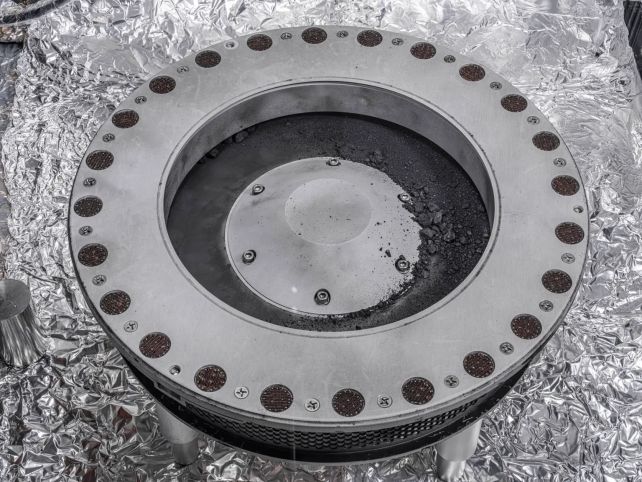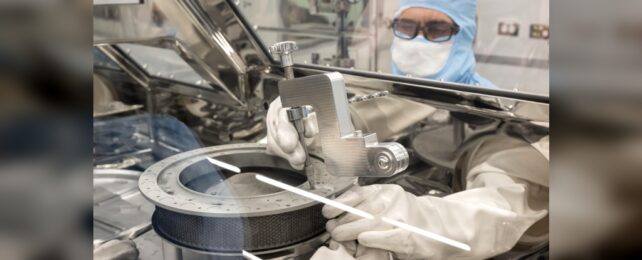It's been over 3.5 months since NASA's OSIRIS-REx spacecraft dropped off its precious sample of asteroid dust, and scientists have finally managed to get the lid off the sample container.
Now, the team can finally complete the steps needed to disassemble the Touch-and-Go Sample Acquisition Mechanism (TAGSAM) container, and access the rocks and dirt collected from asteroid Bennu. Once retrieved, the sample can be divvied up and distributed to science teams around the world.
"Finally having the TAGSAM head open and full access to the returned Bennu samples is a monumental achievement that reflects the unwavering dedication and ingenuity of our team," says astronomer Dante Lauretta of the University of Arizona Lunar and Planetary Laboratory.
"This success reaffirms the significance of OSIRIS-REx and our commitment to advancing our understanding of the cosmos. We eagerly anticipate the next chapter as we share these precious samples with the global scientific community and continue our journey of discovery."
OSIRIS-REx made its flyby of Earth on September 24, dropping off the TAGSAM after an epic mission that took more than 7 years. The capsule parachuted down to the Utah desert, where it was efficiently retrieved and transported immediately to a clean facility, to be opened with an absolute minimum of terrestrial contamination.

Although the outer capsule opened pretty easily, giving scientists access to 70 grams of asteroid dust, the main TAGSAM head containing the majority of the sample remained tightly sealed against the team's best efforts. The container was sealed with 35 fasteners, two of which remaining stubbornly resistant to the tools approved for use in the sterile glovebox in which the opening was to take place.
To solve this problem, the team had to develop new tools. They designed two new multi-part tools, which had to undergo rigorous testing and rehearsal before finally being put to use in the glovebox on the actual TAGSAM head.
There is still some disassembly to complete before the full sample can be viewed, extracted, and measured, but the significant hurdle of those two fasteners has been solved at least. Science can now proceed.
"In addition to the design challenge of being limited to curation-approved materials to protect the scientific value of the asteroid sample, these new tools also needed to function within the tightly-confined space of the glovebox, limiting their height, weight, and potential arc movement," says petrologist Nicole Lunning, OSIRIS-REx curator at NASA's Johnson Space Flight Center.
"The curation team showed impressive resilience and did incredible work to get these stubborn fasteners off the TAGSAM head so we can continue disassembly. We are overjoyed with the success."
Now, finally, we might be able to clap our eyes on the largest haul of asteroid dirt ever successfully collected and delivered to Earth by a human mission.
OSIRIS-REx, now renamed OSIRIS-APEX, is currently en route to another asteroid, the potentially hazardous object Apophis. That rendezvous is due to take place in 2029.
